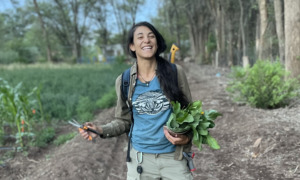 DENISNATA/SHUTTERSTOCK
DENISNATA/SHUTTERSTOCK
Normative relationships are based on the assumption that individuals are capable of making decisions for themselves. When that individual is a minor or has diminished capacity, this may not be possible in all respects. Whether it’s a simple communication, a business deal or a sexual encounter, two people can part company with one believing there was mutual consent, the other believing there was no mutual consent.
The frequency with which this happens indicates a societal confusion about just what consent really is. As confusing as this is for adults, it is at least as confusing for youth.
General definition of consent between youth
Consent has both a general definition and many legal definitions, depending on the circumstance. We are writing about teaching general consent skills to youth. While we may incidentally use legal language and concepts, our focus is not legal nor does this purport to be legally authoritative.
Consent is essential in order to avoid allegations of theft, assault, battery, rape and other legal accusations. What is the general definition of consent? It is giving permission or agreement to participate in an activity. The essential elements of valid consent are characterized by:
- Decision-making capacity
- Full disclosure of information
- Full comprehension
- Voluntariness
- Clear agreement
- Duration.
Implied consent is concurrence that is not expressly indicated. It is inferred from a person’s actions and the circumstances of a particular situation. Valid implied consent can even be indicated by inaction or silence. Miscommunication about consent can often occur if the consent is only implied.
Consent as part of communication skills for youth

Sarah Casper
How can people be sure they have secured valid consent? Power dynamics can blur the concept of voluntary. Commonly used terms like hookup and chill blur the meaning of full comprehension. Even something like being unsure of one’s own COVID-19 status blurs the notion of full disclosure of information. This means that to understand valid consent, among other skills, a person must be proficient in understanding power dynamics, in understanding the effect that terminology has in a conversation and in having vulnerable conversations.
Consent entered the social conversation in a robust way in 2017 with the #MeToo movement. The past several years have seen allegations of systemic sexism in corporate America, sexual assaults on college campuses, the abuse of young boys by clergy and many other stories of unwanted touch.
In schools and homes, teachers, parents and caregivers are responsible for teaching children human interaction or social emotional skills. However, there is a gap in the learning. Teaching consent skills to children has not been a priority, but it needs to be. Many youth are unaware of what it means to have consent skills, let alone how to acquire these skills.
Consent skills are a collection of social emotional tools that help a person navigate conversations about physical touch and interactions. Skills such as being assertive, saying no, tuning in to one’s own body, understanding others’ body language, identifying and resisting coercion, handling rejection, checking in and identifying affirmative consent all fall into the category of consent skills. These are skills helpful for engaging in conversations about touch yet are generalizable to all interpersonal interaction.
Most people associate consent with sexuality. Sex is a high-stakes environment. The consequences of not securing valid consent in sex can include long-lasting emotional trauma, physical trauma, unwanted pregnancy, etc. But sex is not the first place where consent needs to be discussed.
From a young age, children develop scripts and schemas to understand the world. They interpret their own relationships and the relationships of those around them to develop an understanding of how to treat touch and physical interactions. Children mostly spend time around family, friends and caregivers. This means that most physical interactions in a child’s life are, by definition, safe.
This is also likely why teaching consent skills in childhood has been overlooked. However, a child’s mind is malleable and ripe for learning. And the learning that takes place in the low-stakes scenarios in the past will affect them in high-stakes scenarios in the future.
Children need to practice, watch these skills in action

Daniel Pollack
As with any skill, practice and coaching are necessary for proficiency. Consent skills are no different. Children who learn consent skills when they are young have time to practice these behaviors, work through their skill deficits and become comfortable with not only knowing these behaviors, but actually using them effectively.
Research in skill acquisition demonstrates that it’s not enough to just provide knowledge and information. Deliberate practice accounts for individual differences in skill acquisition and performance and “must include explicit goals of improving aspects of individual performance with established practice activities that offered immediate feedback and opportunities for repetition after reflection.” Directed repetition, reflection and feedback are fundamental components of skill learning.
The Collaborative for Academic, Social and Emotional Learning uses research like this to inform its work. It emphasizes the importance of high-quality, evidence-based social and emotional learning programs that meet certain characteristics, including “whether the program offers students the opportunity to practice skills that are taught,” i.e. deliberate practice. An example of a social emotional skill in action is “prompting the use of a conflict-resolution skill and using dialoguing to guide students through the steps can be an effective approach to helping them apply a skill in a new situation.”
Providing deliberate practice will “promote and reinforce the target skills.” Social-learning theory posits that modeling and reinforcing behaviors increase the likelihood that a behavior is more likely to occur again in the future. In social emotional learning, this can look like a parent expressing an emotion, asking their children to try the same and then praising them for doing so. It is not enough for children to be knowledgeable about the behavior. They must actually practice the behavior and be reinforced in their use of skills.
Whether a parent is armed with a formal curriculum or not, there are consent skills that they can teach to their children in an engaging and meaningful way. Children can practice being assertive through talking about the difference between aggressive, submissive and assertive communication styles, role playing each style with their parents and then, while watching television or reading a book, identifying the styles they see. Children can learn how to effectively handle rejection by curating a list of respectful responses to a friend’s “no,” practicing these in everyday interactions and intentionally using a preidentified coping skill when they’re frustrated.
Such exercises can and should be practiced over weeks, months and years. Accompany this deliberate consent practice with a parent’s modeling of graceful responses to disappointment and assertive styles of parenting, and children will be on their way to improving their overall communication abilities and reducing dysfunctional relationships.
Sarah A. Casper is a freelance writer in Brooklyn, New York with a background in psychology and mindfulness for children. Email her at sarahacasper@gmail.com.
Daniel Pollack, M.S.S.A. (M.S.W. ), Esq. , is a professor at the School of Social Work, Yeshiva University, New York City.































